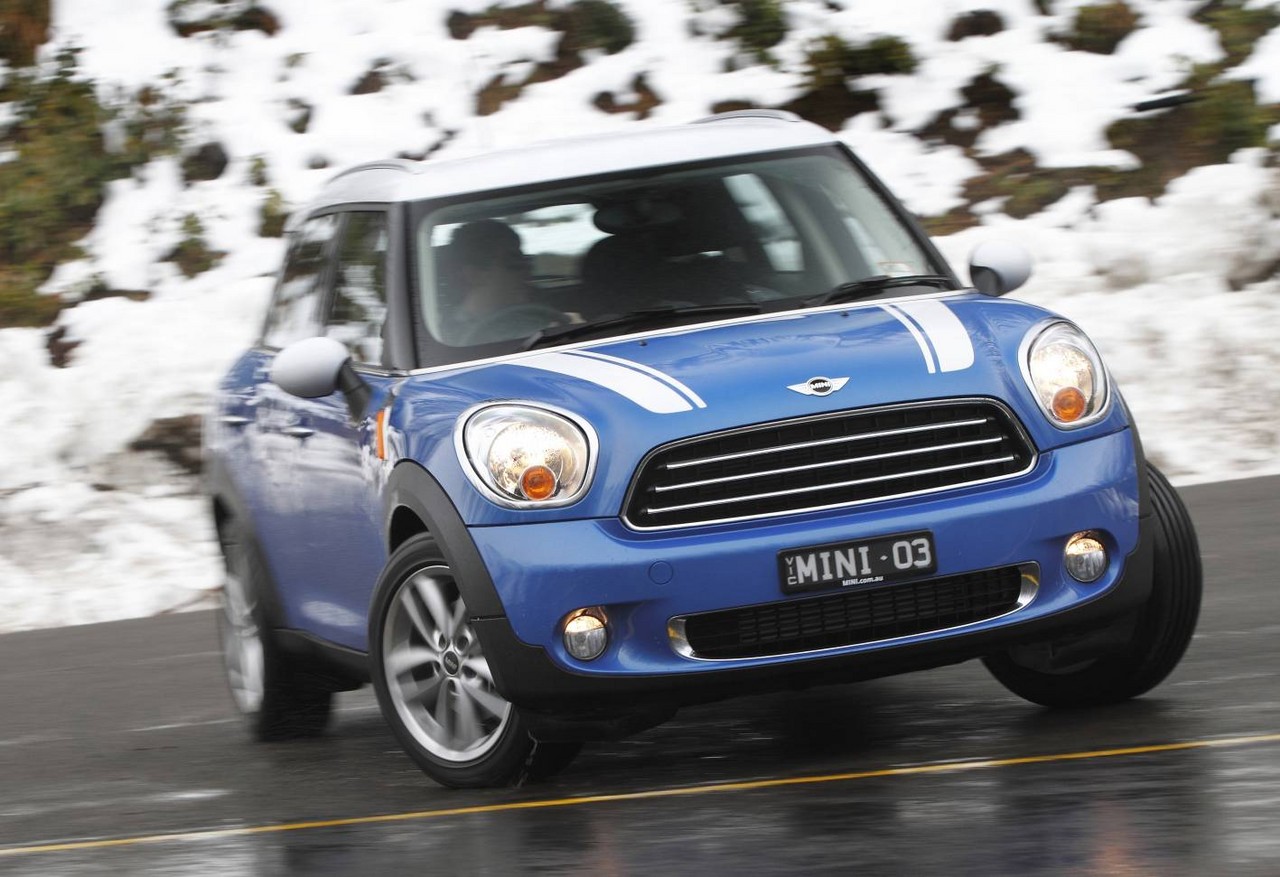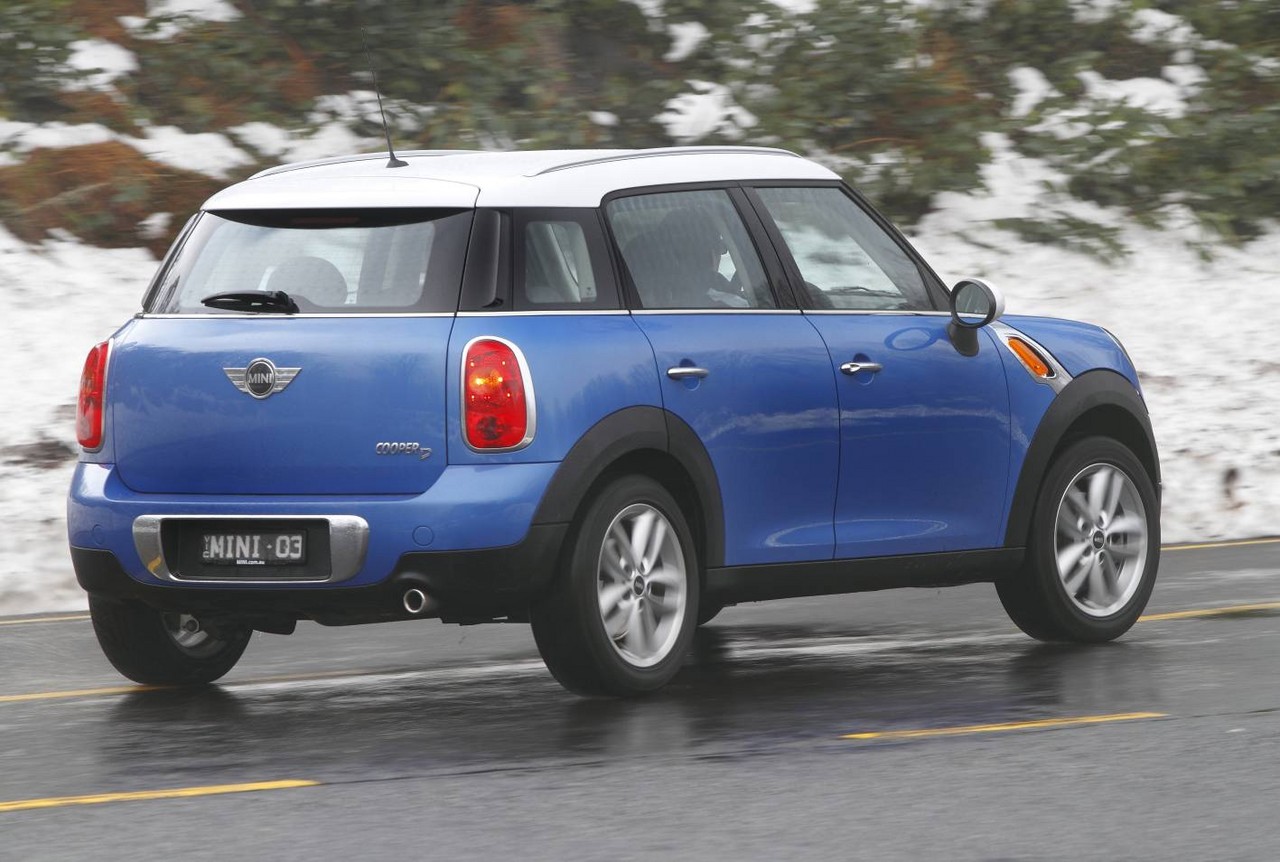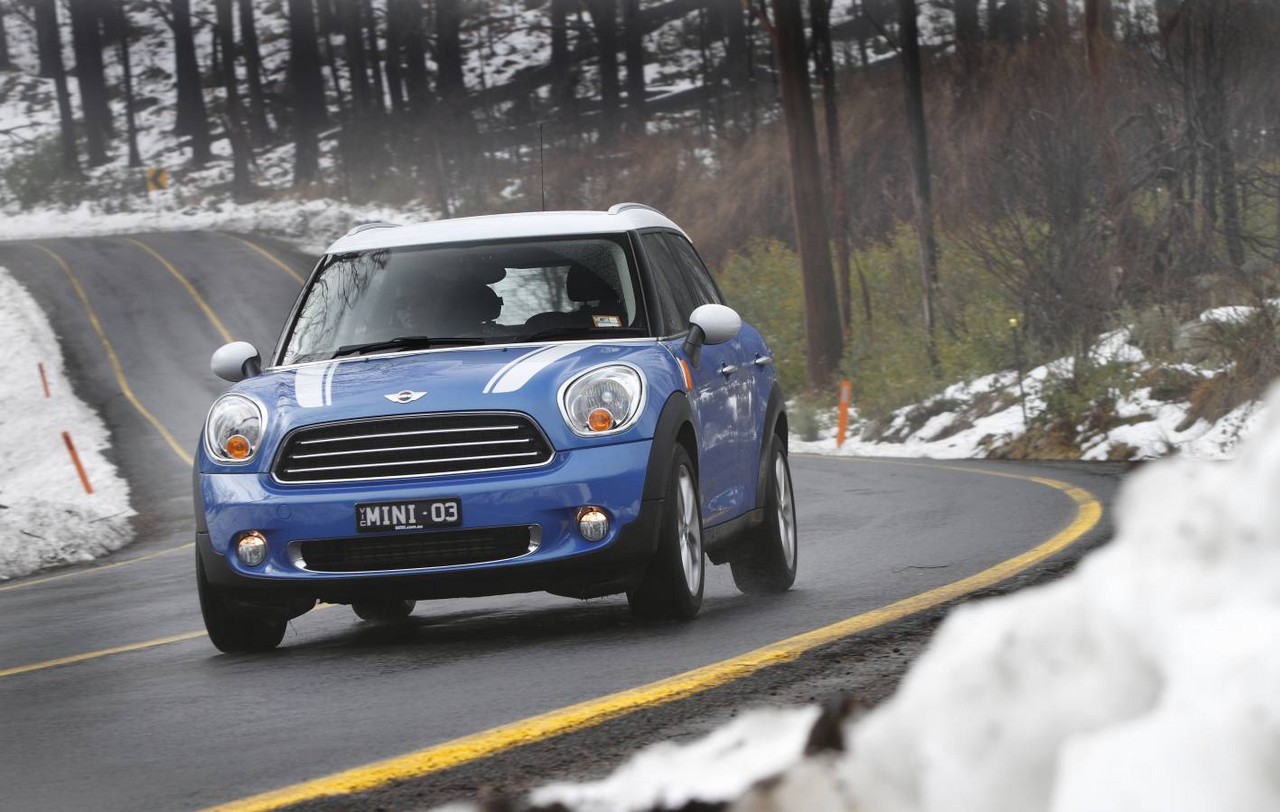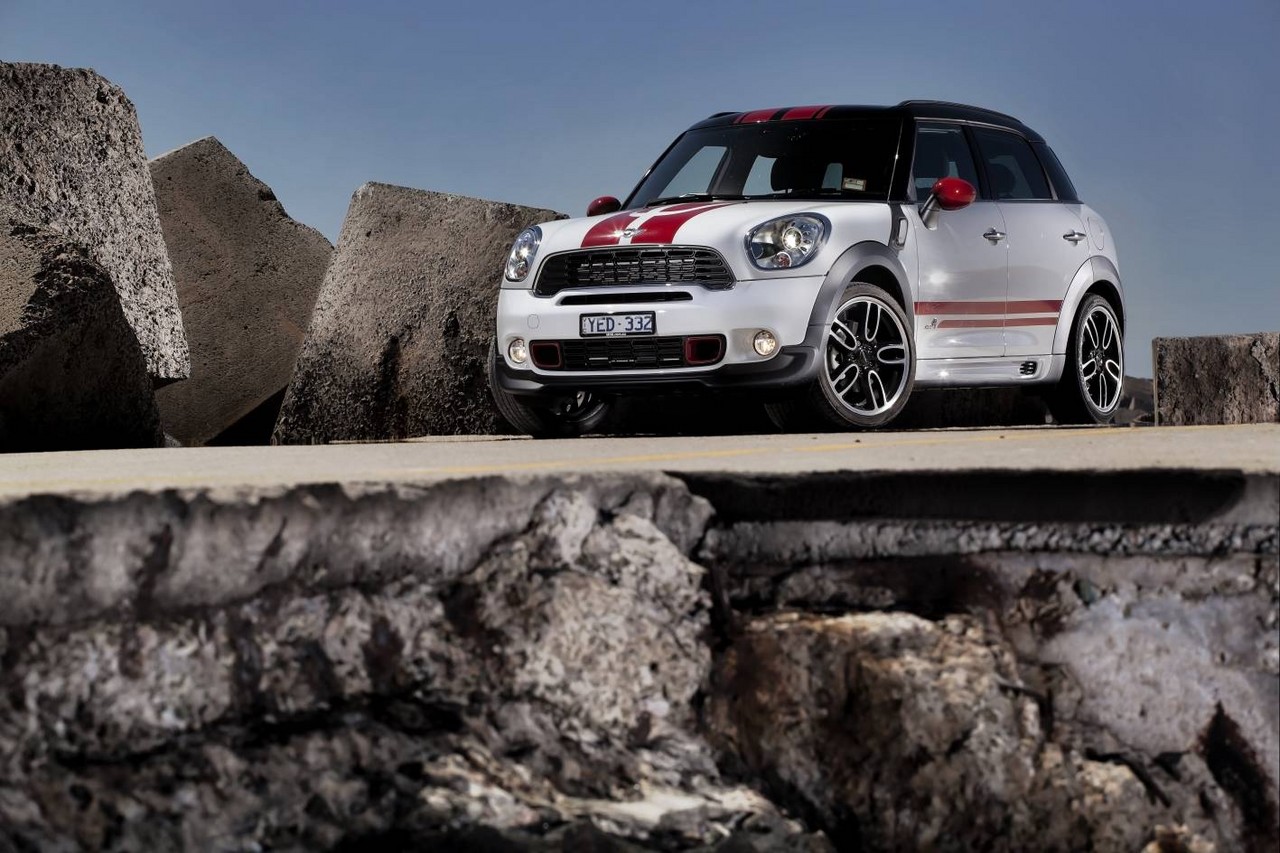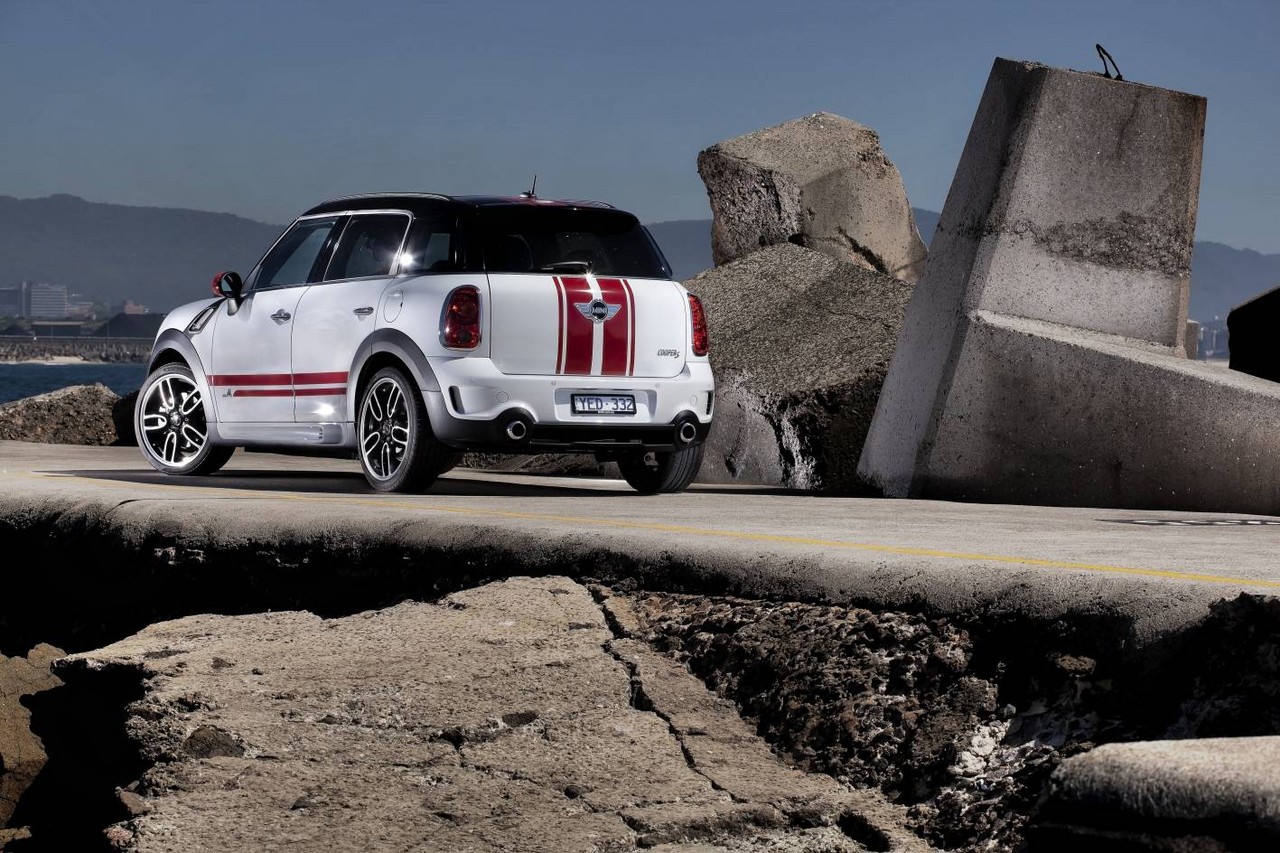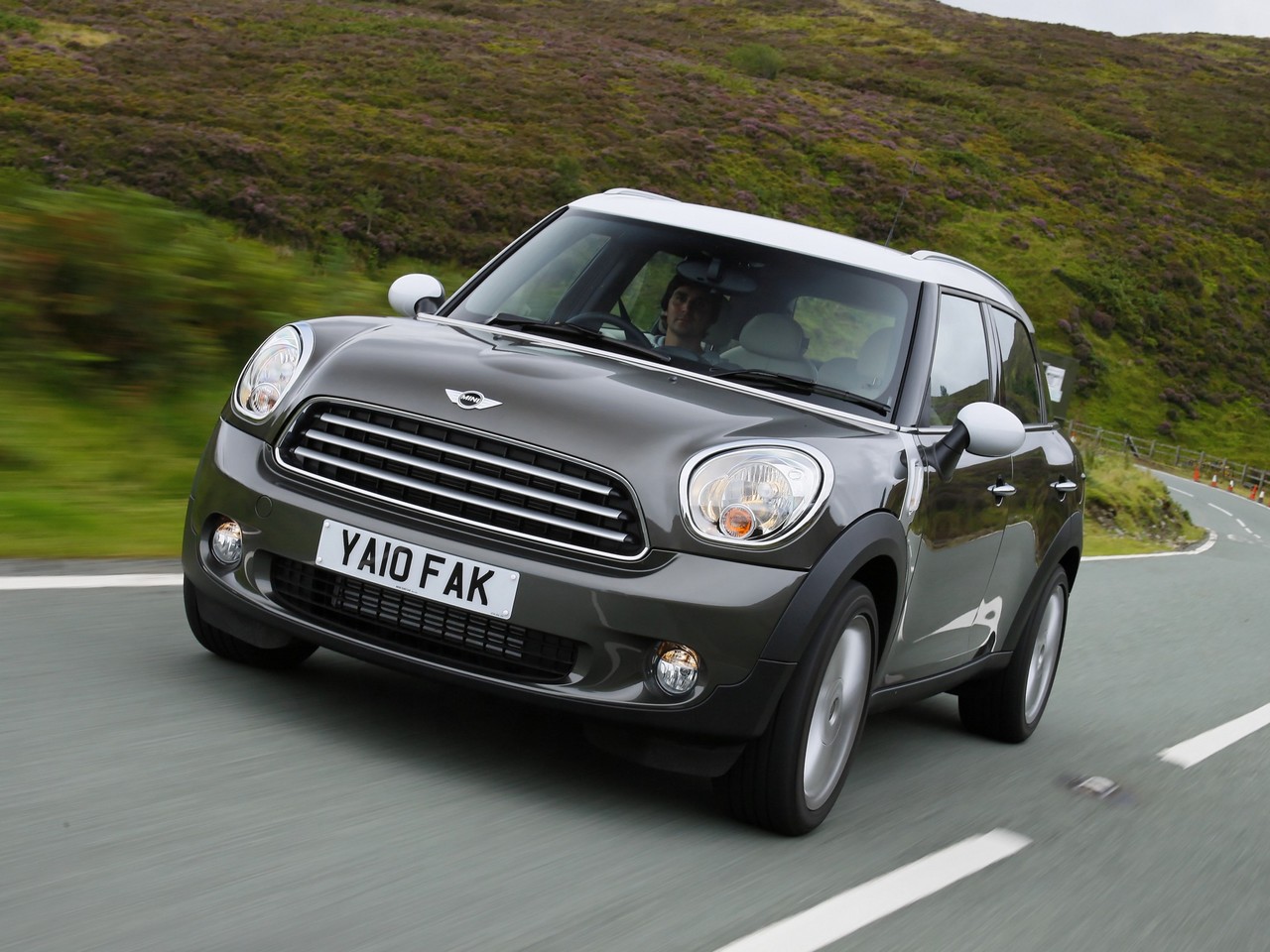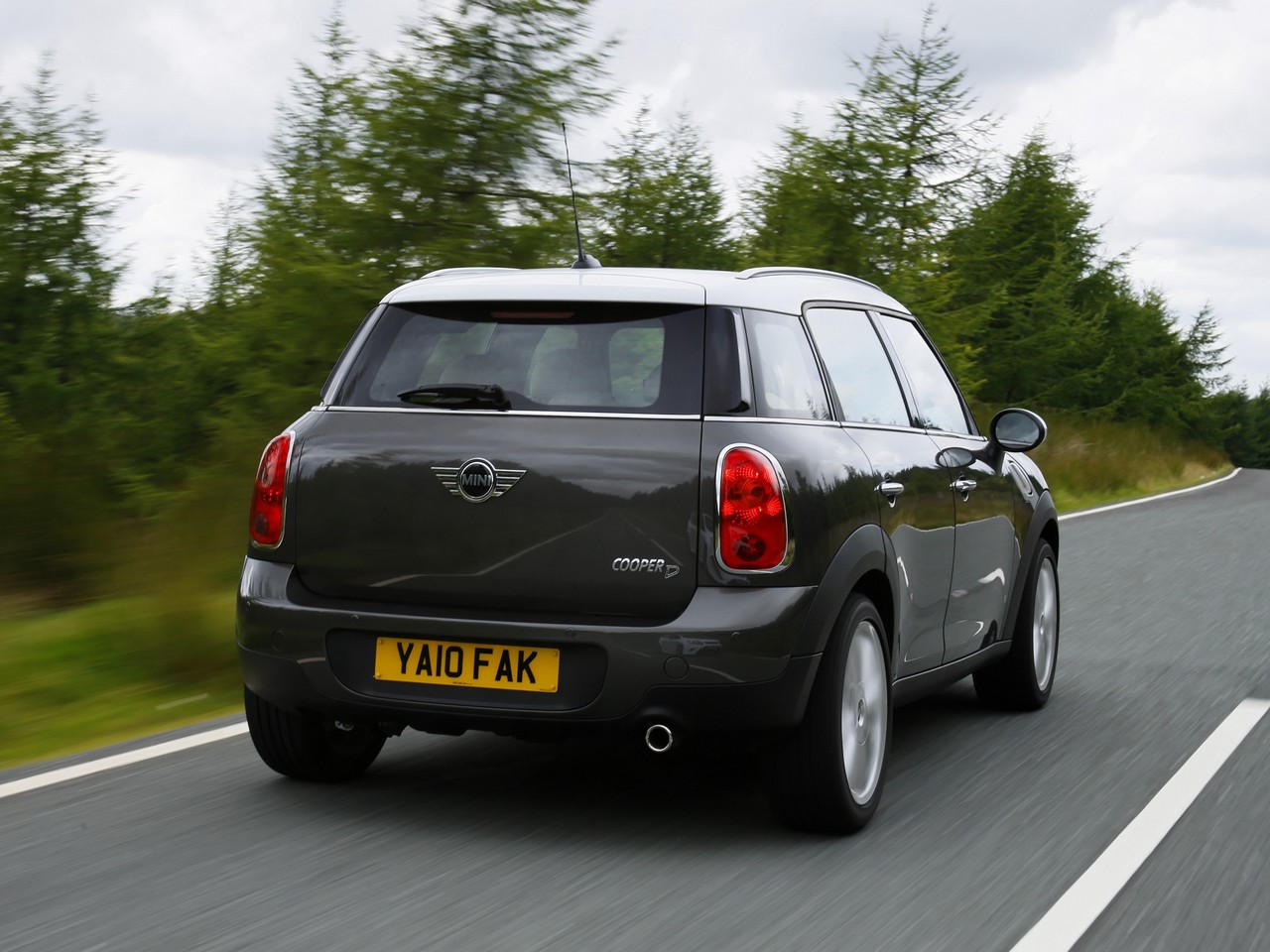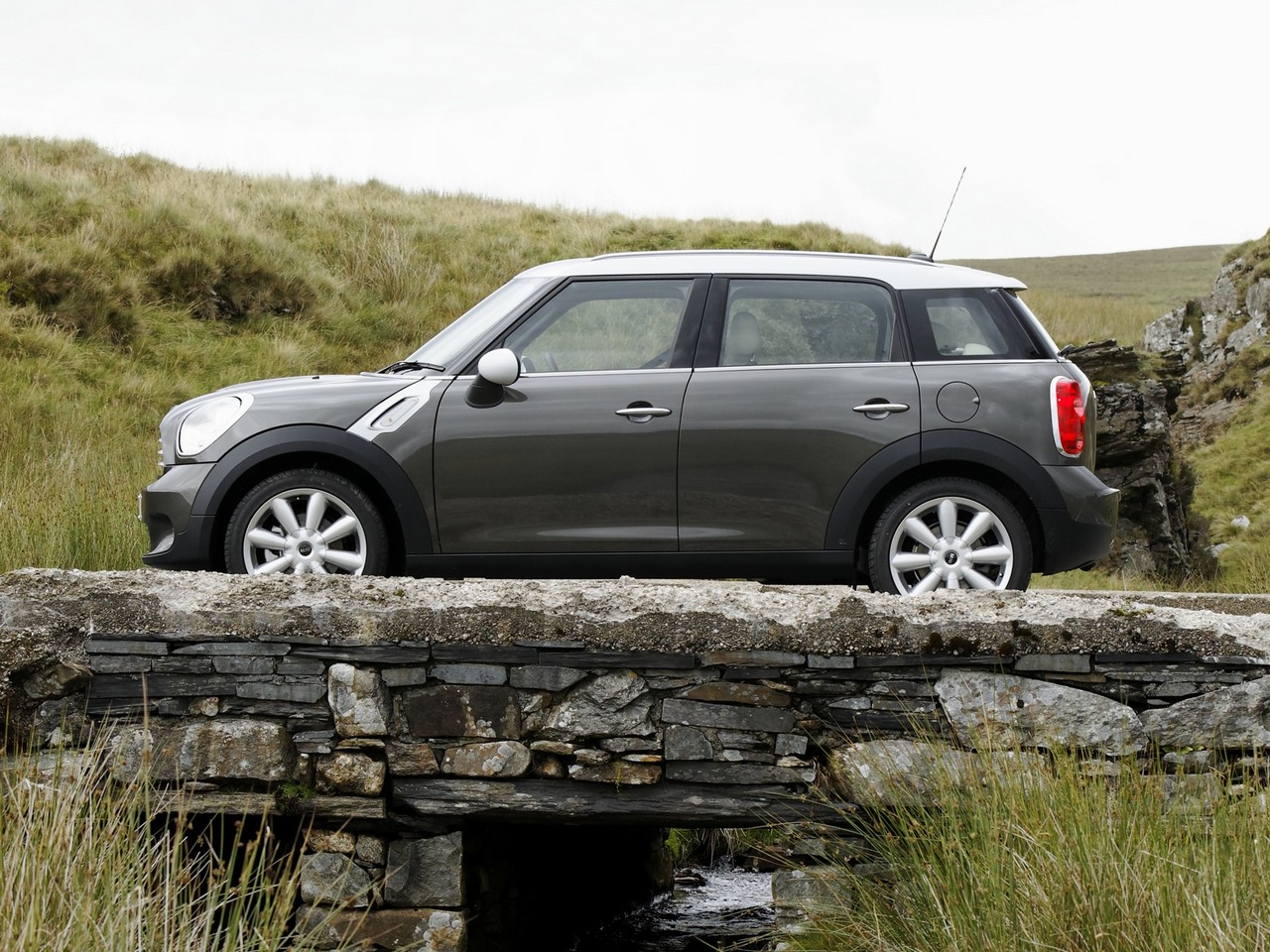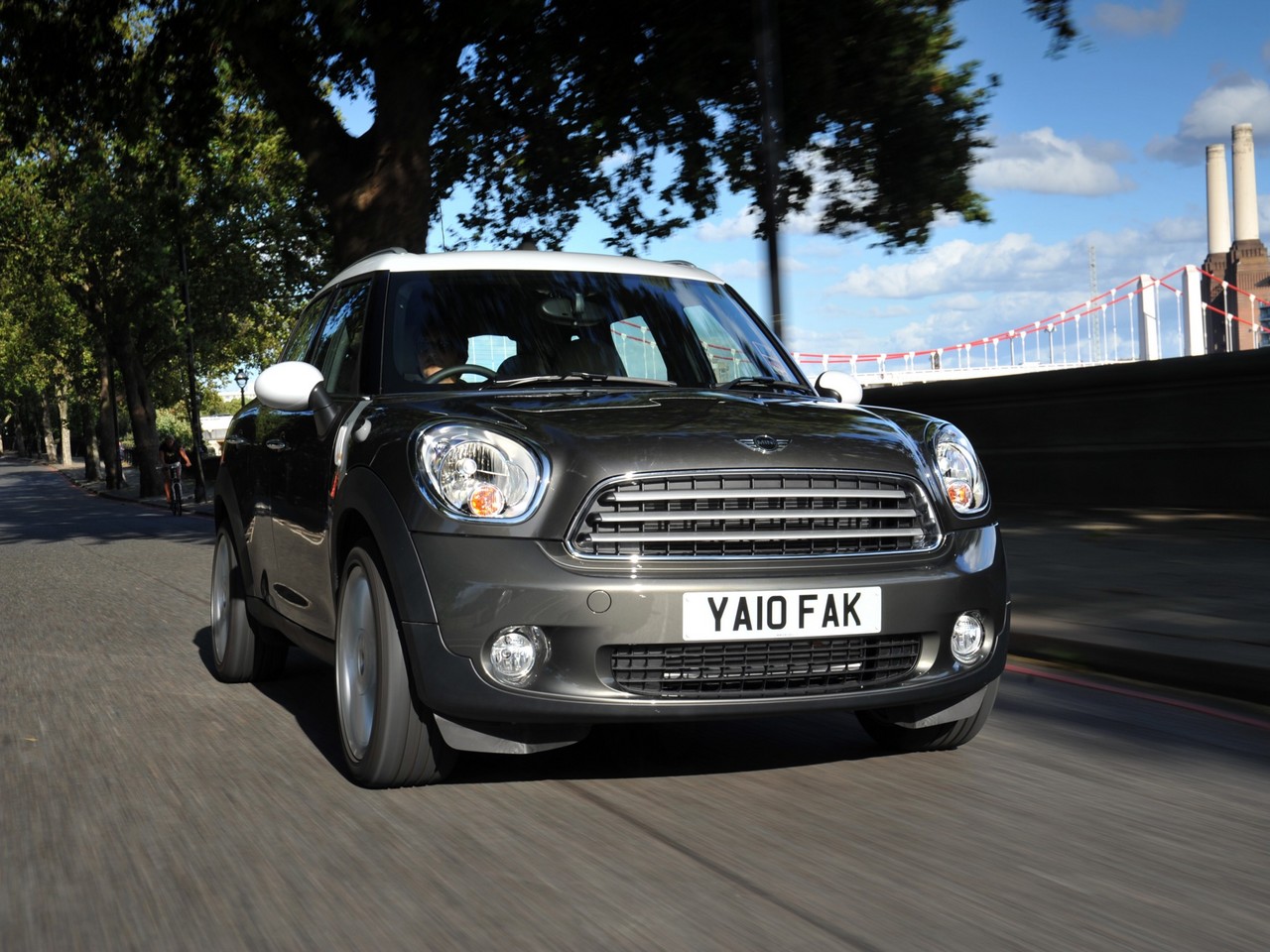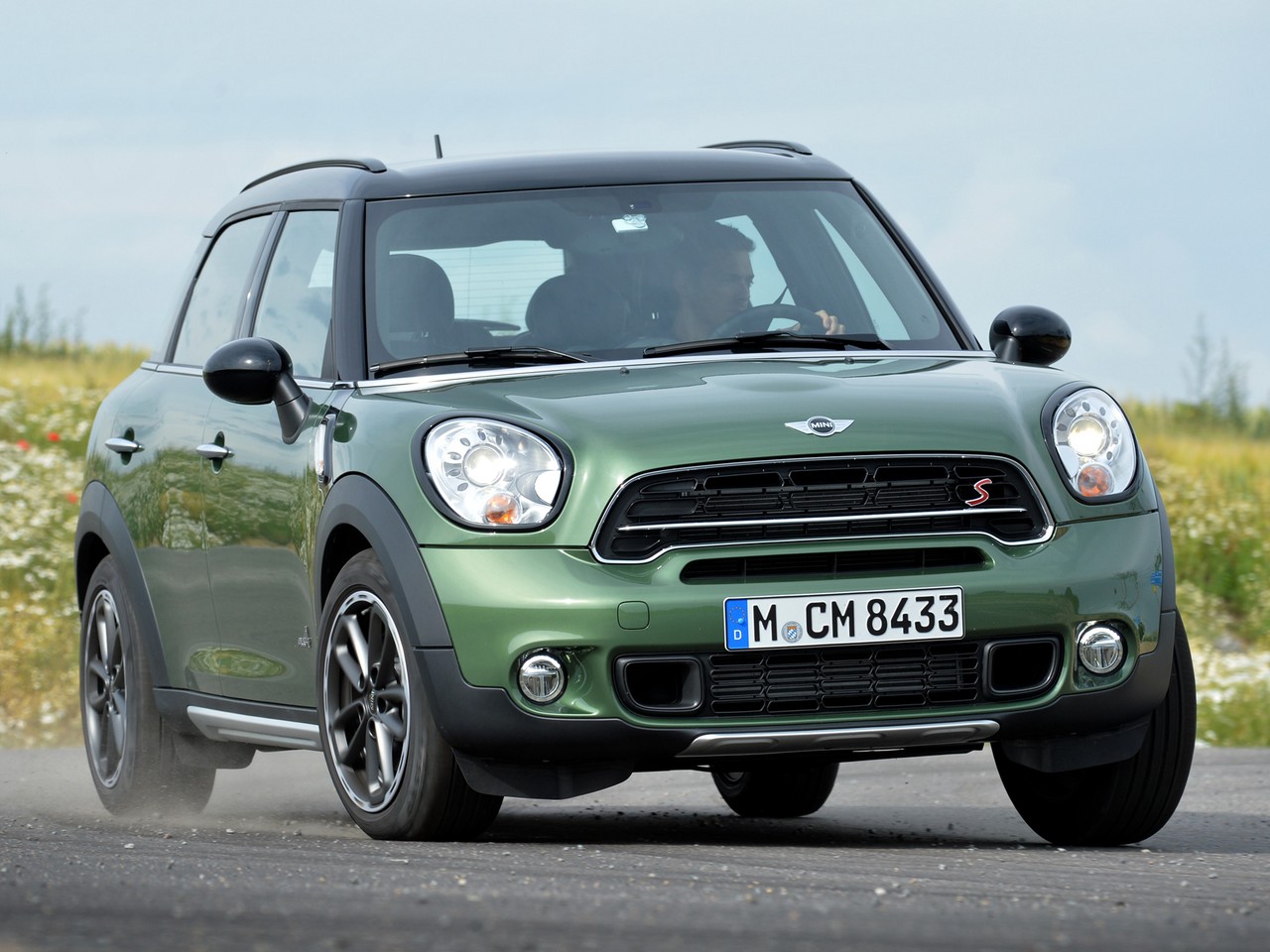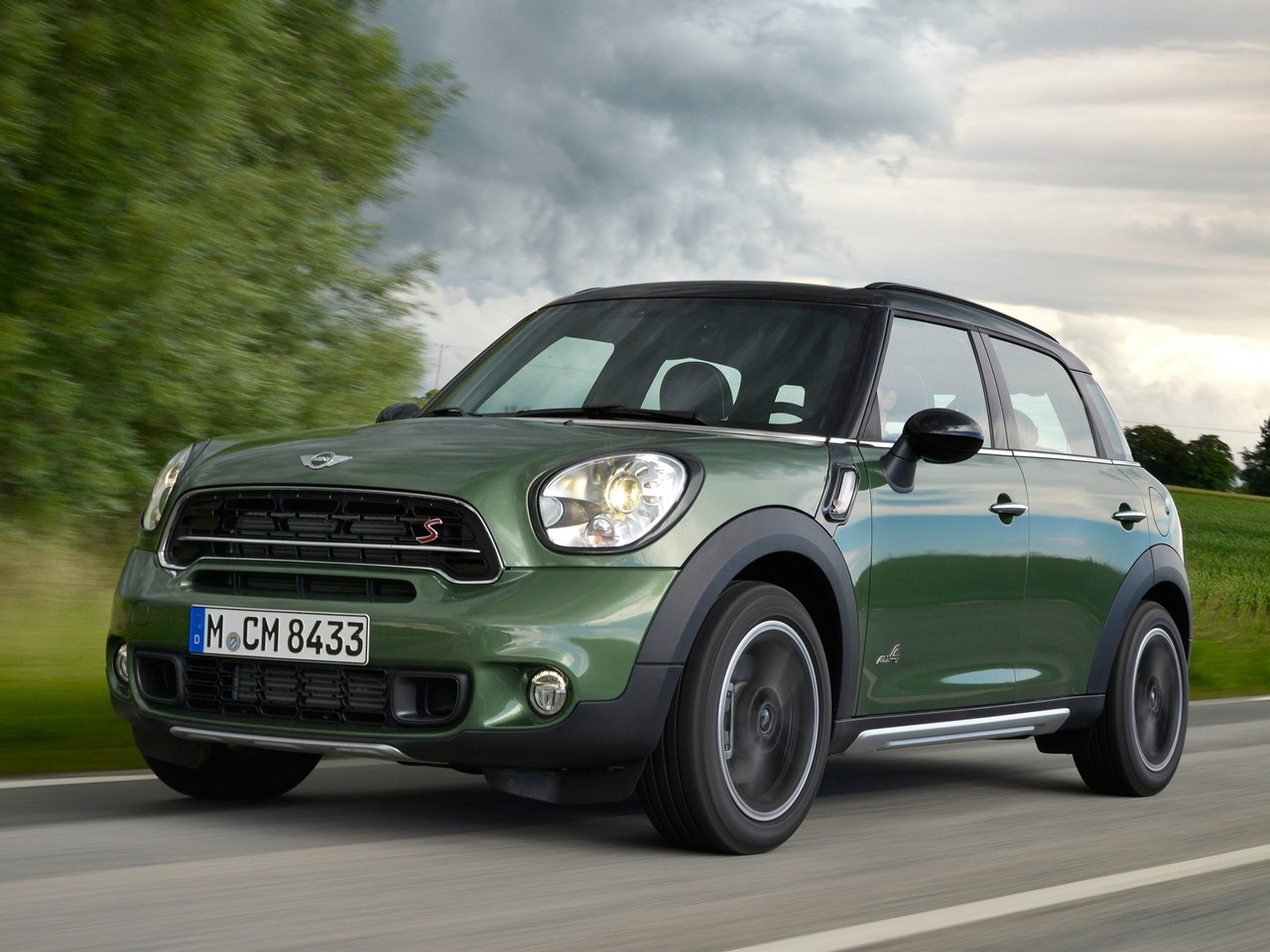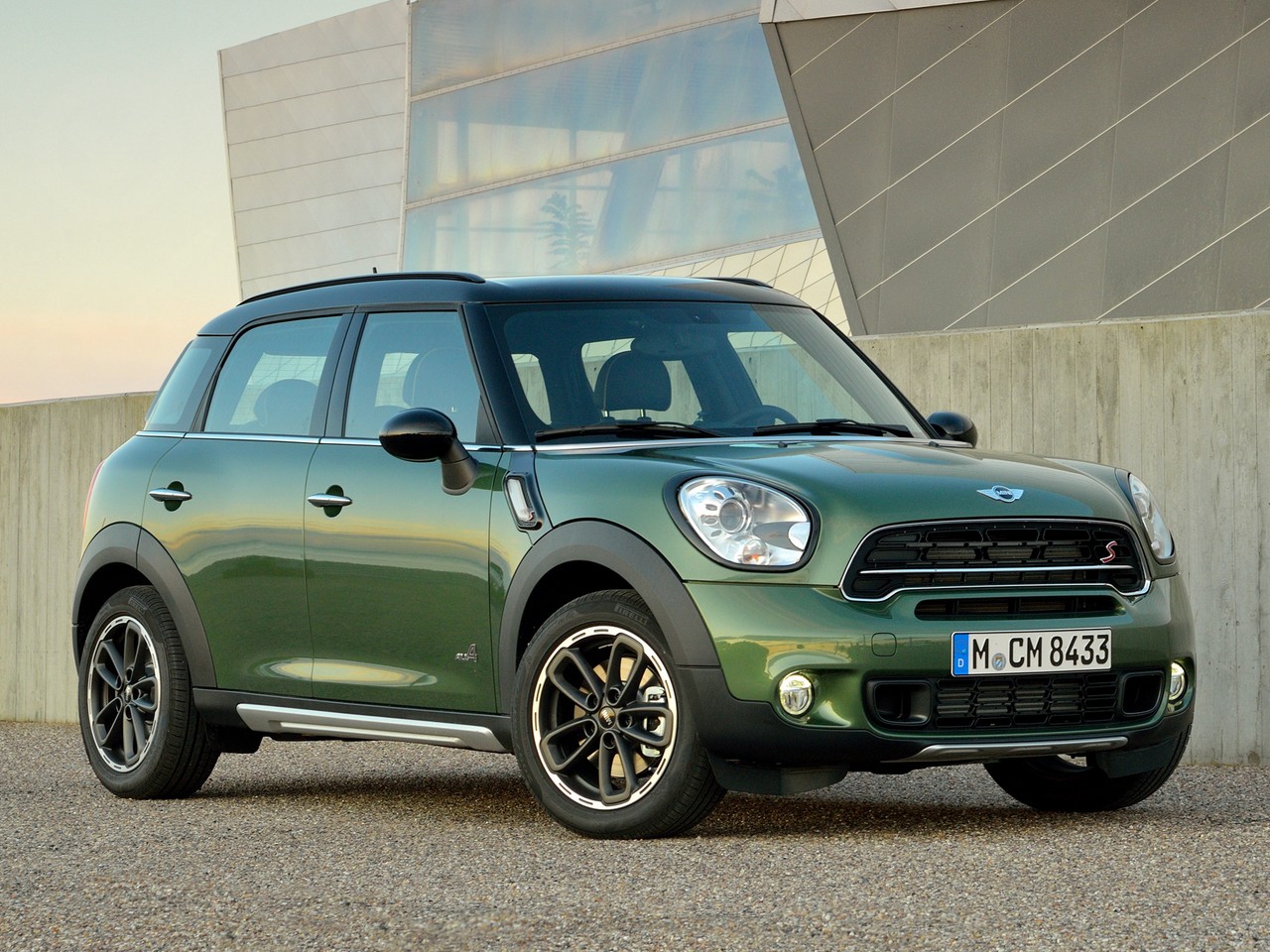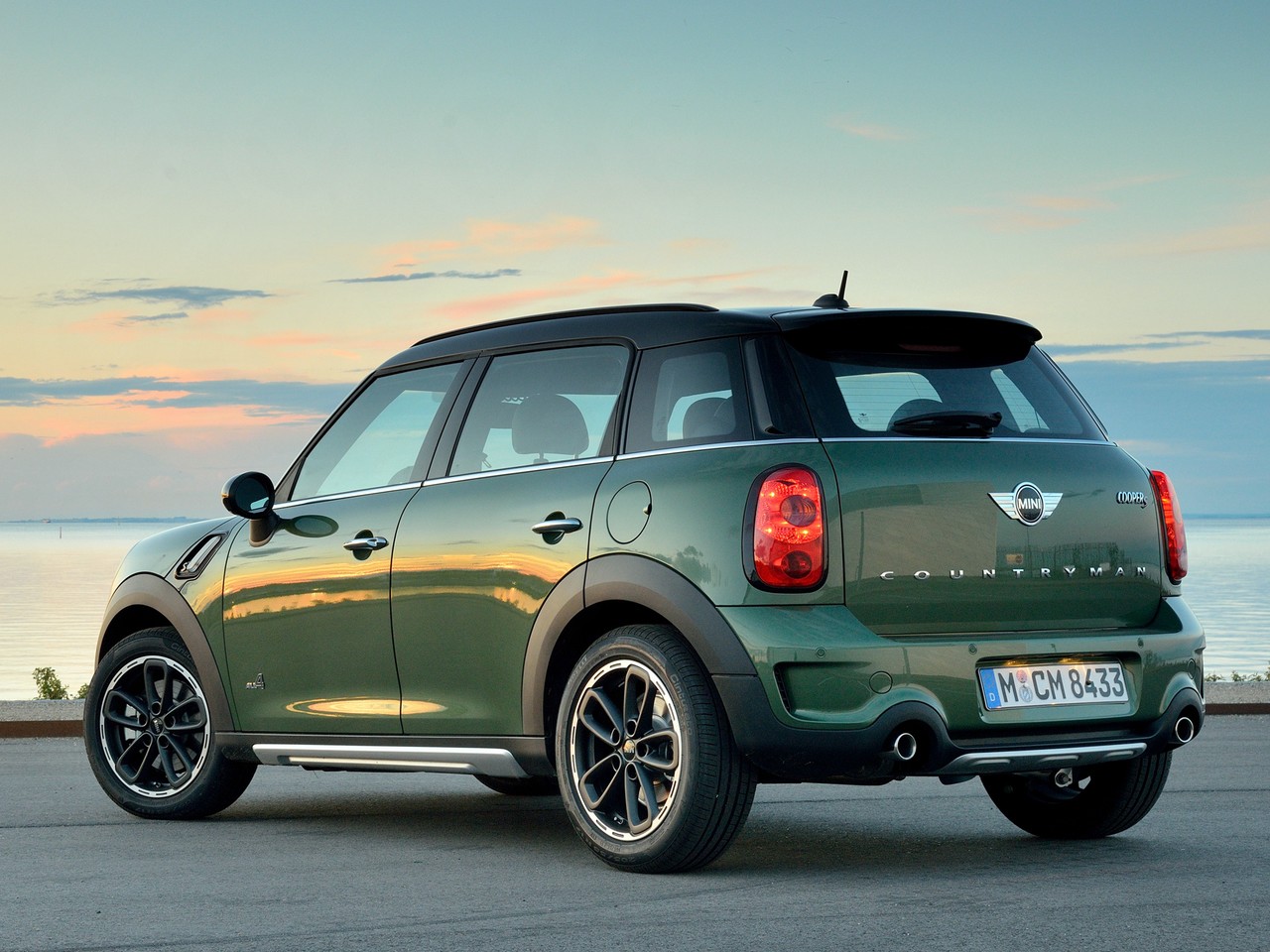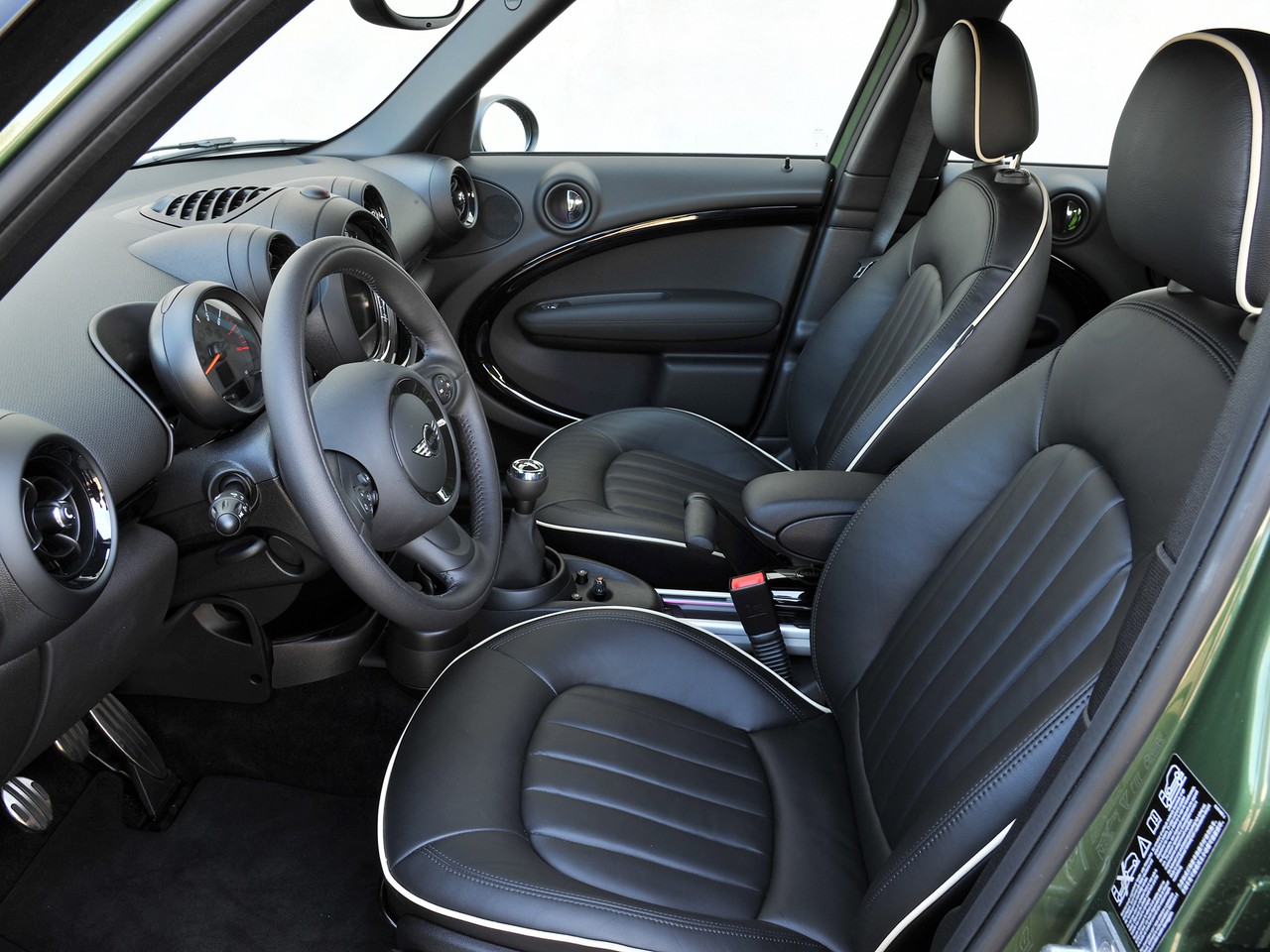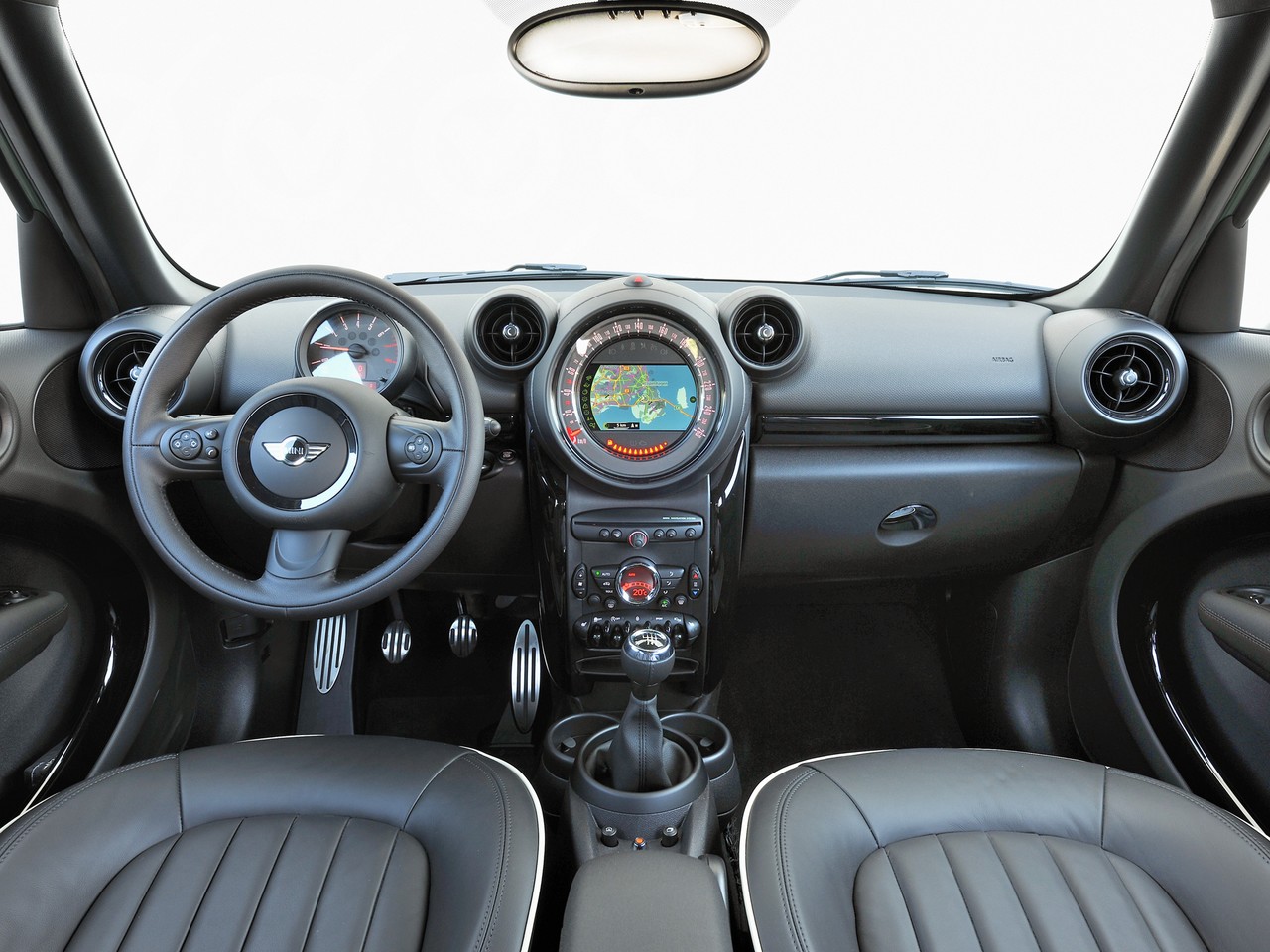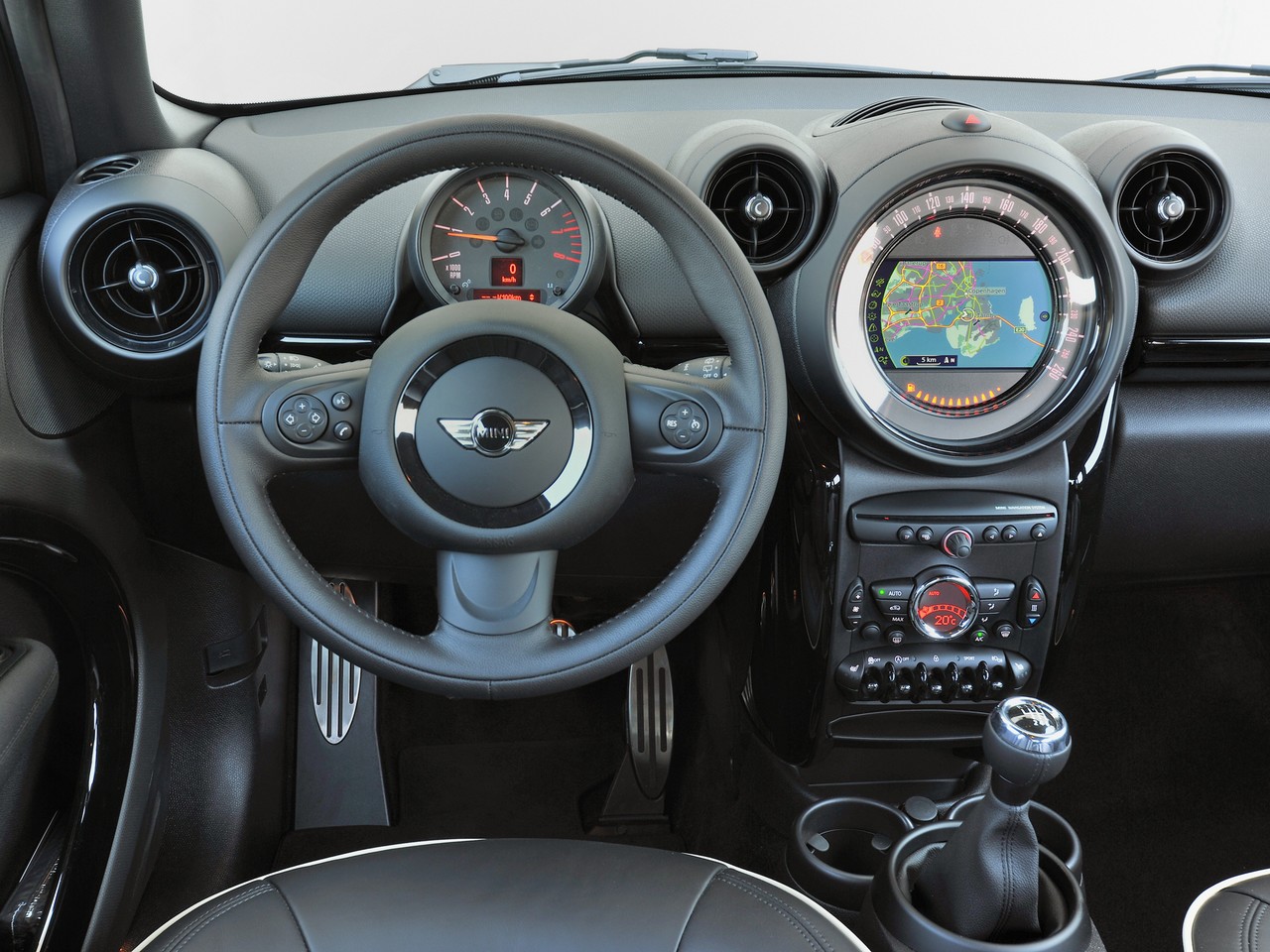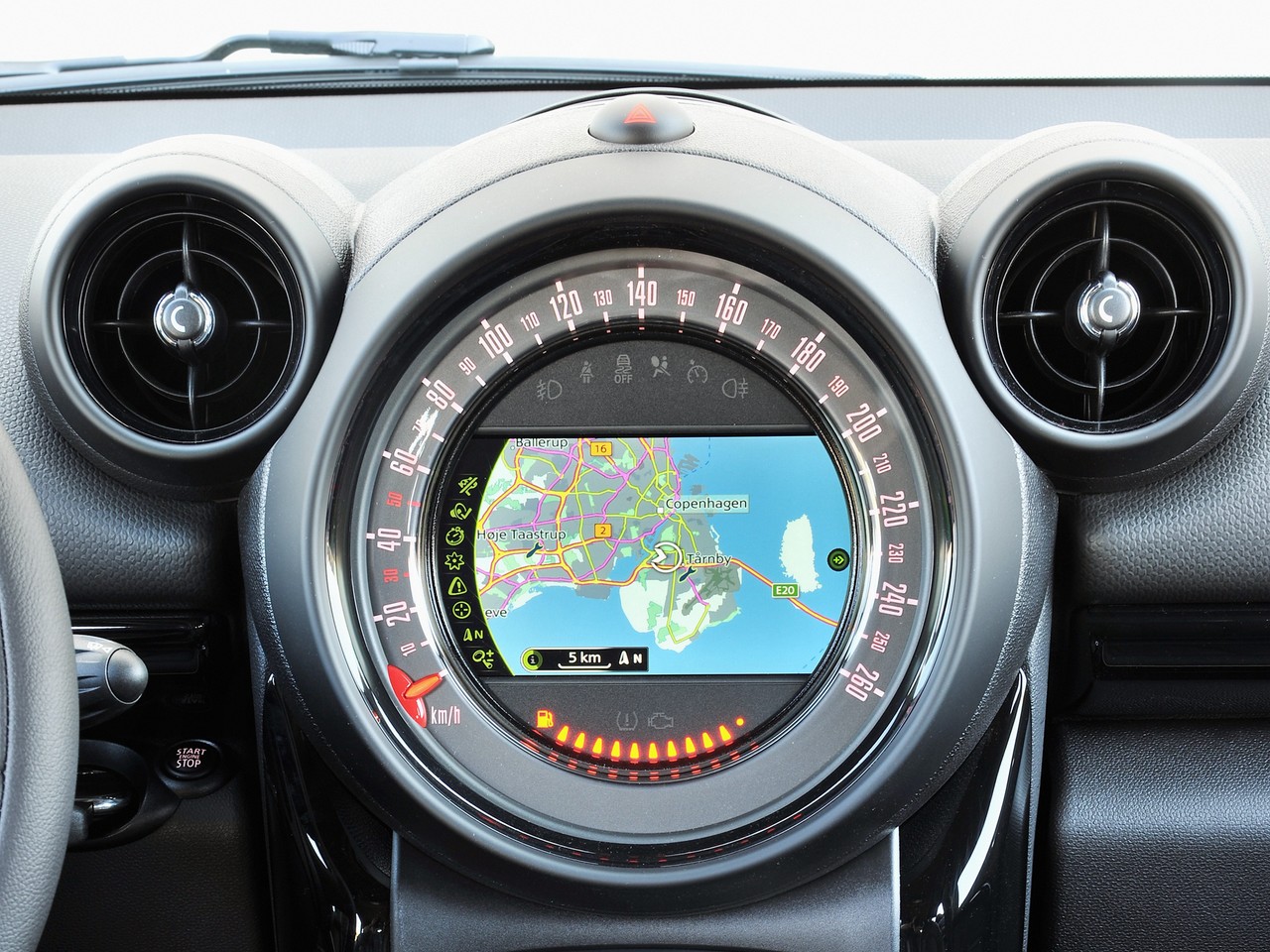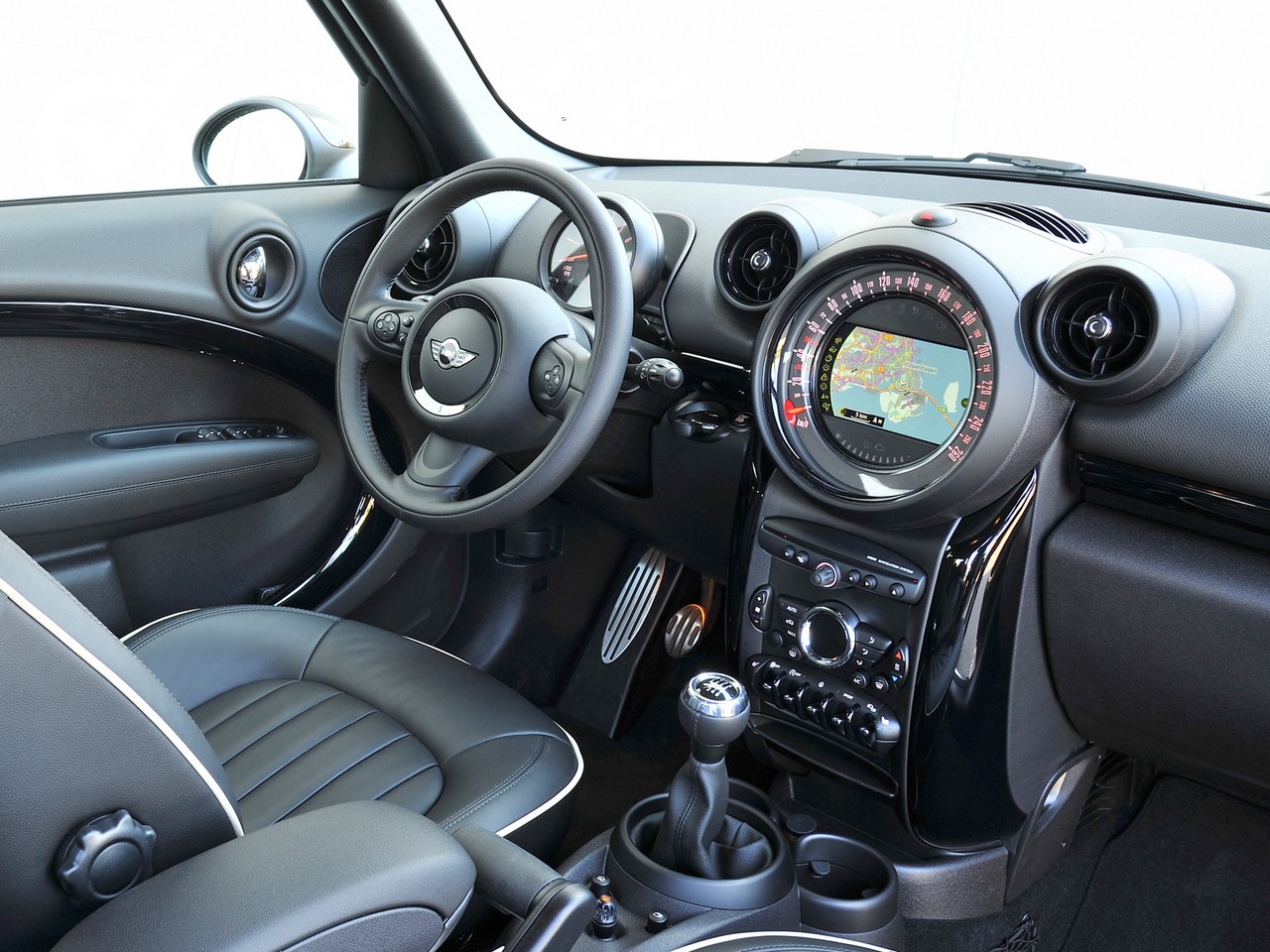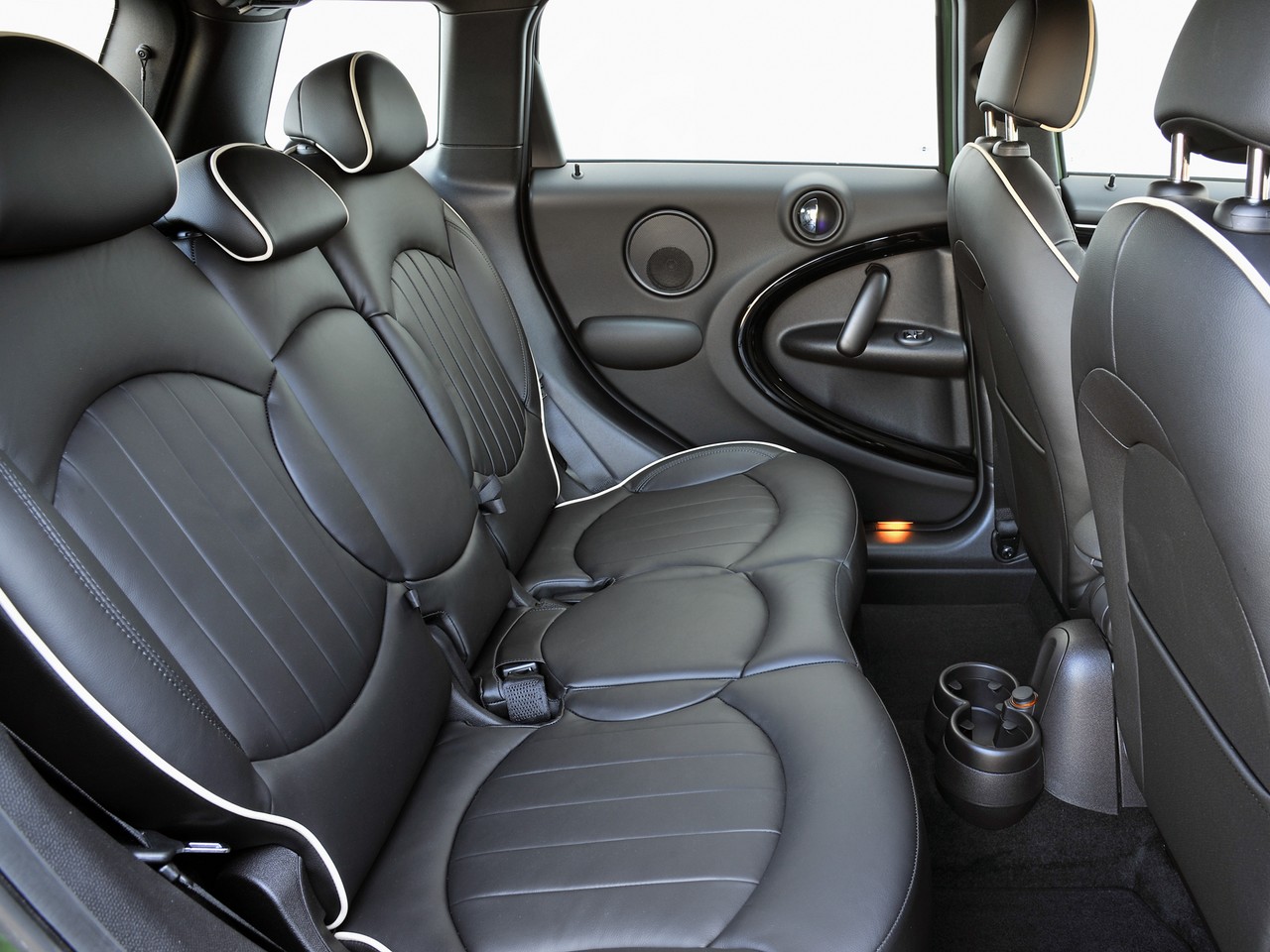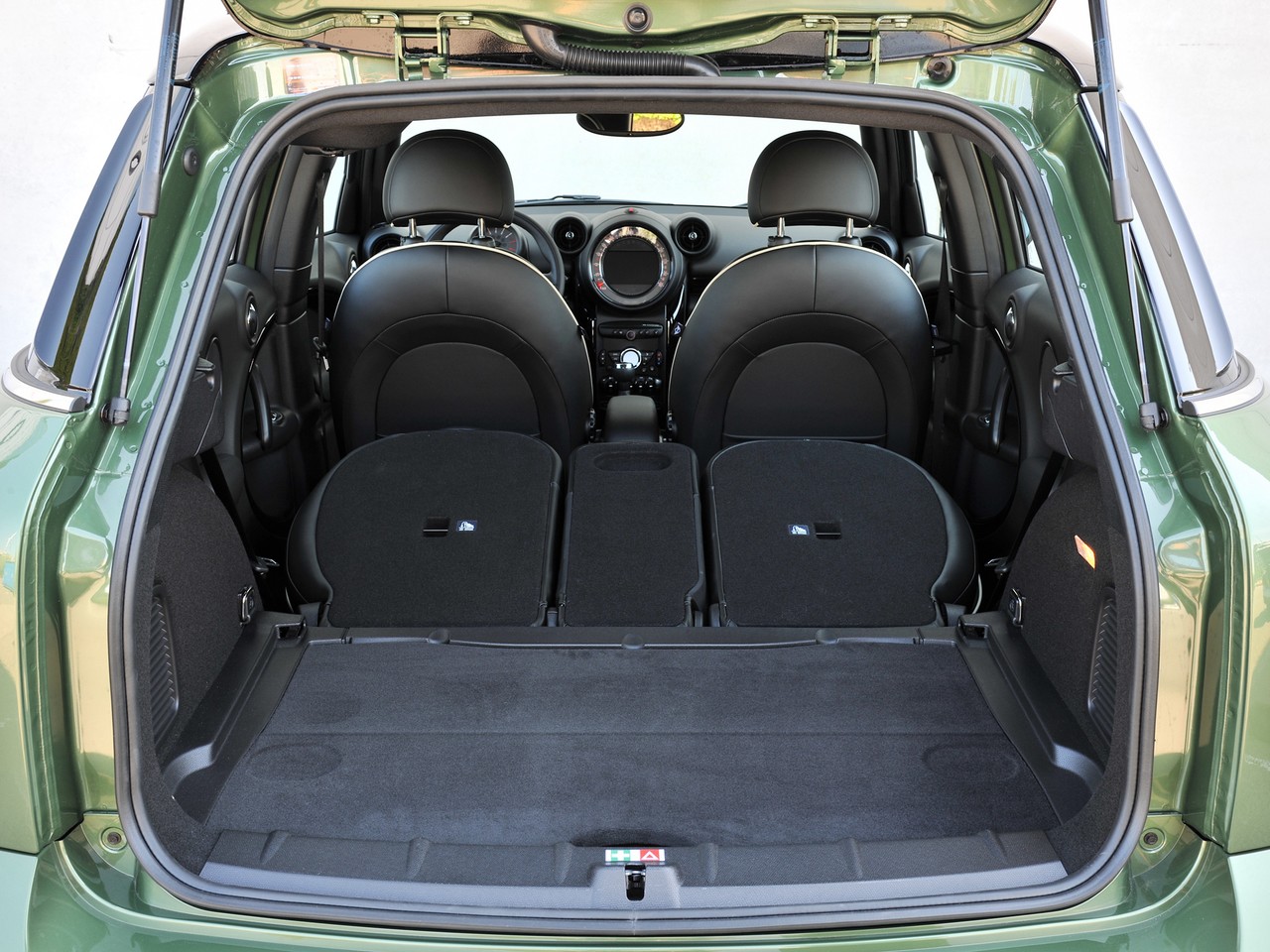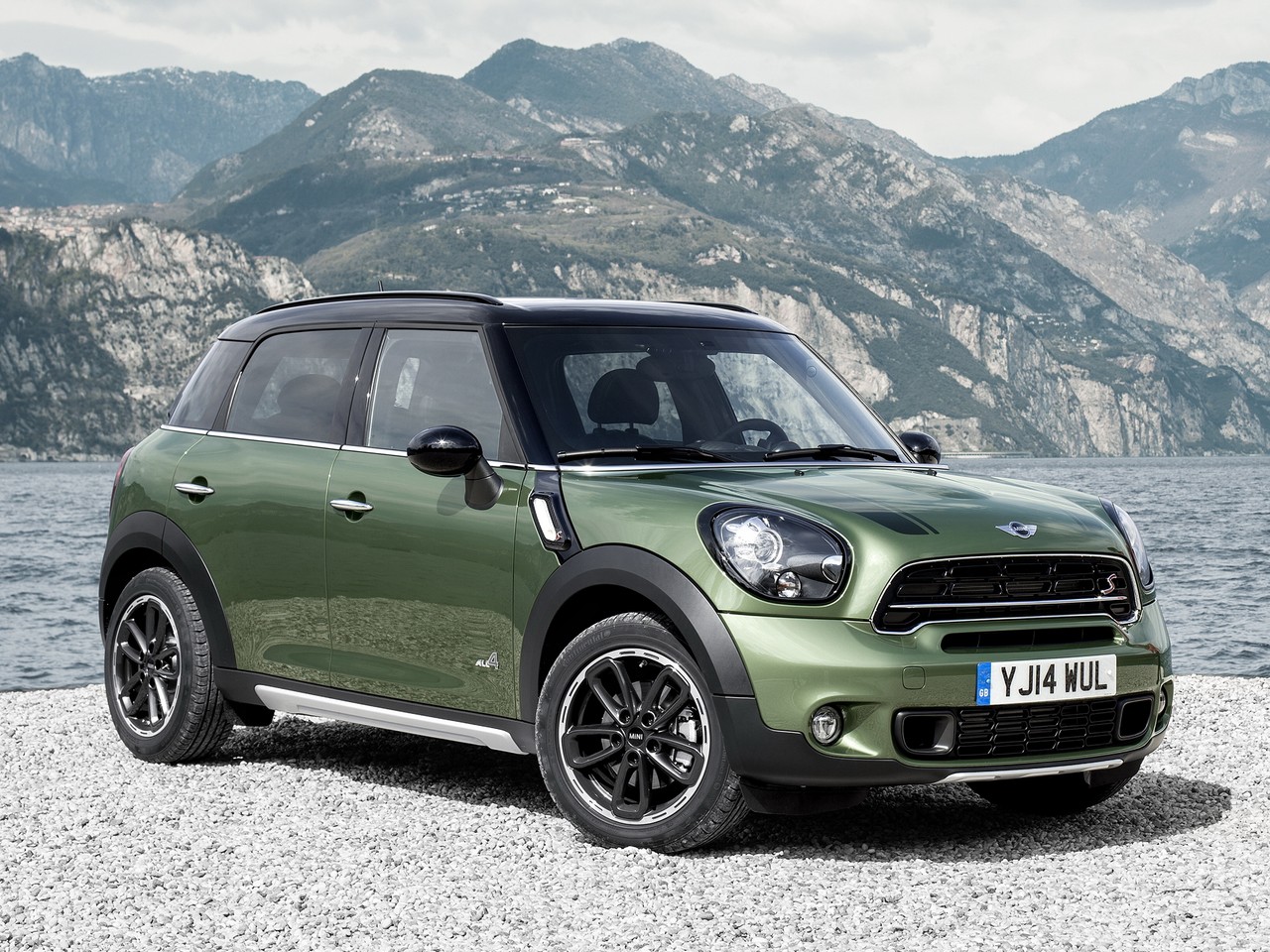
- Fuel-efficient turbo-diesel engines
- Capable dynamics
- Accurate, fast-ratio steering provides good feedback (though less feedback for 4WD models)
- SUV body adds practicality over the Mini R56 Cooper …
- … but there are far more practical choices
- Suspenson lacks compliance
- Cheap interior plastics
- Limited cargo space
- Naturally aspirated 1.6-litre petrol engine lacks power
- Petrol engines susceptible to premature timing chain tensioner wear
Review: Mini R60.I Countryman (2011-14)
Overview
Released in February 2011, the Mini R60 Series I (R60.I) Countryman was a compact SUV, available in four- or five-seat models. Manufactured by Magna Steyr in Graz, Austria, the R60 Countryman range initially consisted of Cooper and Cooper S variants, though the Cooper D and Cooper SD followed in May 2011.
Engines
Of the engines,
- the Cooper variants had a naturally aspirated, 1.6-litre ‘Prince’ engine with a cast aluminium cylinder block, double overhead camshafts, four valves per cylinder, variable intake valve lift (based on BMW’s ‘Valvetronic’) and a compression ratio of 11.0:1;
- the Cooper S engine added a twin-scroll turbocharger (with boost pressure limited to 0.8 bar), common-rail direct injection, infinite intake camshaft adjustment, sodium-filled outlet valves (for greater cooling) and the compression ratio was lowered to 10.5:1;
- the John Cooper Works variant had the same engine as the Cooper S but with a stronger cylinder head and valves, boost pressure increased to 1.2 bar, a modified air intake, free-flowing exhaust, and a compression ratio of 10.0:1;
- The Cooper D and SD were powered by the 1.6- N47 C16A and 2.0-litre N47 C20A diesel engines which had variable geometry turbines, common-rail injection (operating at up to 1800 bar), double overhead camshafts, four valves per cylinder and a diesel particulate filter.
As standard, the R60 Countryman had the following ‘Minimalism technologies’:
- Automatic Start/Stop function: automatically switches the engine off when the vehicle is stationary and the driver puts the car into neutral. To restart the driver only need engage the clutch again before pulling away in the normal manner. The system may be de-activated at the touch of a button when not required;
- Brake Energy Regeneration: uses an Intelligent Alternator Control (IAC) and an Absorbent Glass Mat battery to recycle previously lost energy, which saves fuel. The IAC reduces drag on the engine by only engaging when required to charge the battery, whereas a traditional alternator is always pulling power from the engine. Additionally, the energy generated by the engine on over-run (under braking or descending a hill) was previously wasted. Now this lost energy is utilised by the IAC to charge the battery; and,
- Shift Point Display: aids drivers of manual transmission MINIs in selecting the most economical gear in which to drive. The engine management system analyses speed, road situation and accelerator pedal position and based on this data calculates optimum gearing. The ideal gear is then displayed by number in the cockpit display.
| Variant | Editions | Drive | Engine | Trans. | Peak power | Peak torque |
|---|---|---|---|---|---|---|
| Cooper | N/A, Chilli |
FWD | 1.6-litre N16B16A petrol I4 | 6sp man., 6sp auto |
90 kW at 6000 rpm | 160 Nm at 4250 rpm |
| Cooper D | N/A, Chilli |
FWD, AWD |
1.6-litre N47C16A turbo-diesel I4 | 6sp man., 6sp auto |
82 kW at 4000 rpm | 270 Nm at 1750-2250 rpm |
| Cooper S | N/A, Chilli |
FWD, AWD |
1.6-litre N18B6A turbo petrol I4 | 6sp man., 6sp auto |
135 kW at 5500 rpm | 240 Nm at 1600-5000 rpm |
| Cooper SD | N/A, Chilli |
AWD | 2.0-litre N47C20A turbo-diesel I4 | 6sp man., 6sp auto |
105 kW at 4000 rpm | 305 Nm at 1750-2700 rpm |
| John Cooper Works | N/A | AWD | 1.6-litre N14B16C turbo petrol I4 | 6sp man., 6sp auto |
160 kW at 6000 rpm | 280 Nm at 1900-5000 rpm (O/boost: 300 Nm at 2100-4500 rpm) |
ALL4 all-wheel drive system
For the R60 Countryman, the ‘ALL4’ all-wheel drive system utilised a propeller shaft that extended from the front axle to an electro-magnetic clutch mounted on the rear axle. While the propeller shaft was constantly driven, the ALL4 system directed the engine’s torque to the front wheels in normal conditions. If, however, front wheel slip was detected or the vehicle was being driven ‘enthusiastically’, the electro-magnetic clutch could engage to direct torque to the rear axle. According to MINI, the amount of torque supplied to the wheels was ‘infinitely variable between one per cent and 100, depending upon the driving conditions’.
In addition to the ALL4 all-wheel drive system, the R60 Countryman had two other traction devices:
- When the electronic stability control system was deactivated, an electronic locking function for the front differential would operate to brake a spinning wheel – this function was known as an Electronic Differential Control Lock (EDLC); and,
- Dynamic Traction Control (DTC) allowed controlled slip through the driven wheels to aid moving off on loose sand or deep snow. DTC was also standard for the front-wheel drive MINI Cooper S Countryman.
Dimensions and suspension
Compared to the MINI R61 Paceman , the R60 Countryman was 12 mm shorter (at 4097 mm), 3 mm wider (1789 mm), 43 mm taller (1561 mm) and had a 1 mm shorter wheelbase (2595 mm). Furthermore, the R60 Countryman had MacPherson strut front suspension and independent, multi-link rear suspension.
Safety equipment
Standard safety equipment for the MINI R60 Countryman included dual front airbags, front seat-mounted side airbags, full-length curtain airbags, ABS, electronic brake force distribution, brake assist, electronic stability control, traction control, cornering brake control and front seatbelts with pretensioners and load limiters.
Euro NCAP testing
In Euro NCAP testing , the MINI Countryman – fitted with a 1.6-litre turbo-diesel engine – received a five star safety rating which included an 84 per cent adult occupant protection score and an 83 per cent child occupant protection score. In the frontal impact test, readings indicated fair protection of the front seat passenger’s knees; structures in the dashboard were also considered to pose a risk to the knees and femurs of occupants.
Features
Standard features for the MINI Cooper and Cooper D Countryman included 16-inch alloy wheels with 205/60 R16 tyres, a six speaker sound system with a CD player, MP3 compatibility and auxiliary input, air conditioning, front and rear fog lights, split and folding rear seats, a leather-wrapped steering wheel, remote central locking, power mirrors and windows, a tilt and reach adjustable steering wheel, height adjustable front seats, 12 volt power outlets, ambient lighting, cargo cover, roof rails, trip computer, tyre pressure monitoring and immobiliser.
The Cooper S and Cooper SD Countryman were further equipped with 17-inch alloy wheels with 205/55 R17 tyres, a ‘Radio Boost’ sound system with USB and Bluetooth connectivity, rear parking sensors, rain-sensing wipers and automatic headlights.
The John Cooper Works Countryman was distinguished by its 18-inch alloy wheels with 225/45 R18 tyres, ten speaker sound system, climate control air conditioning, bi-xenon headlights with washers, proximity key and cargo net.
Cooper Chilli
For the Cooper and Cooper D variants, the Chilli editions added 17-inch alloy wheels, a ten speaker Harman Kardon sound system, climate control air conditioning, contoured sports seats with combination cloth/leather seat trim and an electrochromatic rear view mirror.
For the Cooper S and Cooper SD variants, the Chilli editions added 18-inch alloy wheels, climate control air conditioning, bi-xenon headlights with washers, velour floor mats and an electrochromatic rear view mirror.
Specifications
- Specifications: MINI R60 Countryman (July 2010)
- Specifications: MINI R60 Countryman (March 2012)
- Specifications: MINI R60 Countryman (November 2013)
- Specifications: MINI R60 Countryman (April 2014)
Related links
- Press Kit: MINI R60 Countryman (July 2010)
- Press Kit: MINI R60 John Cooper Works Countryman (September 2012)
Review: Mini R60.II Countryman (2014-16)
Overview
Released in September 2014, the MINI R60 Series II (R60.II) Countryman introduced more fuel efficient, Euro 6 emissions compliant engines and improved aerodynamics.
Visual cues for the MINI R60.II Countryman included a red radiator grille rib for the John Cooper Works Countryman and, for other variants, the radiator grille was divided by two ribs. Furthermore, under-ride guard elements for the front and rear aprons were fitted as standard.
Inside, the R60.II Countryman had upgraded upholstery and anthracite-coloured speed and display dials. For greater refinement, acoustic optimisation reduced interior road noise.
| Variant | Drive | Engine | Trans. | Peak power | Peak torque |
|---|---|---|---|---|---|
| Cooper | FWD | 1.6-litre N16B16A petrol I4 | 6sp man., 6sp auto |
90 kW at 6000 rpm | 160 Nm at 4250 rpm |
| Cooper D | FWD, 4WD |
1.6-litre N47C16A turbo-diesel I4 | 6sp man., 6sp auto |
82 kW at 4000 rpm | 270 Nm at 1750-2250 rpm |
| Cooper S | FWD, 4WD |
1.6-litre N18B6A turbo petrol I4 | 6sp man., 6sp auto |
135 kW at 5500 rpm | 240 Nm at 1600-5000 rpm |
| Cooper SD | 4WD | 2.0-litre N47C20A turbo-diesel I4 | 6sp man., 6sp auto |
105 kW at 4000 rpm | 305 Nm at 1750-2700 rpm |
| John Cooper Works | 4WD | 1.6-litre N14B16C turbo petrol I4 | 6sp man., 6sp auto |
160 kW at 6000 rpm | 280 Nm at 1900-5000 rpm (O/boost: 300 Nm at 2100-4500 rpm) |
Features
Standard features for the R60.II Countryman were extended to include Mini’s ‘Visual Boost’ radio, navigation system and a 6.5-inch screen, LED front fog lights with a daytime running function, heated door mirrors and heated windscreen washer jets.
The Cooper S ALL4 and Cooper SD ALL4 variants were also fitted with Mini’s ‘All4 Offroad’ styling package as standard.
Related links
